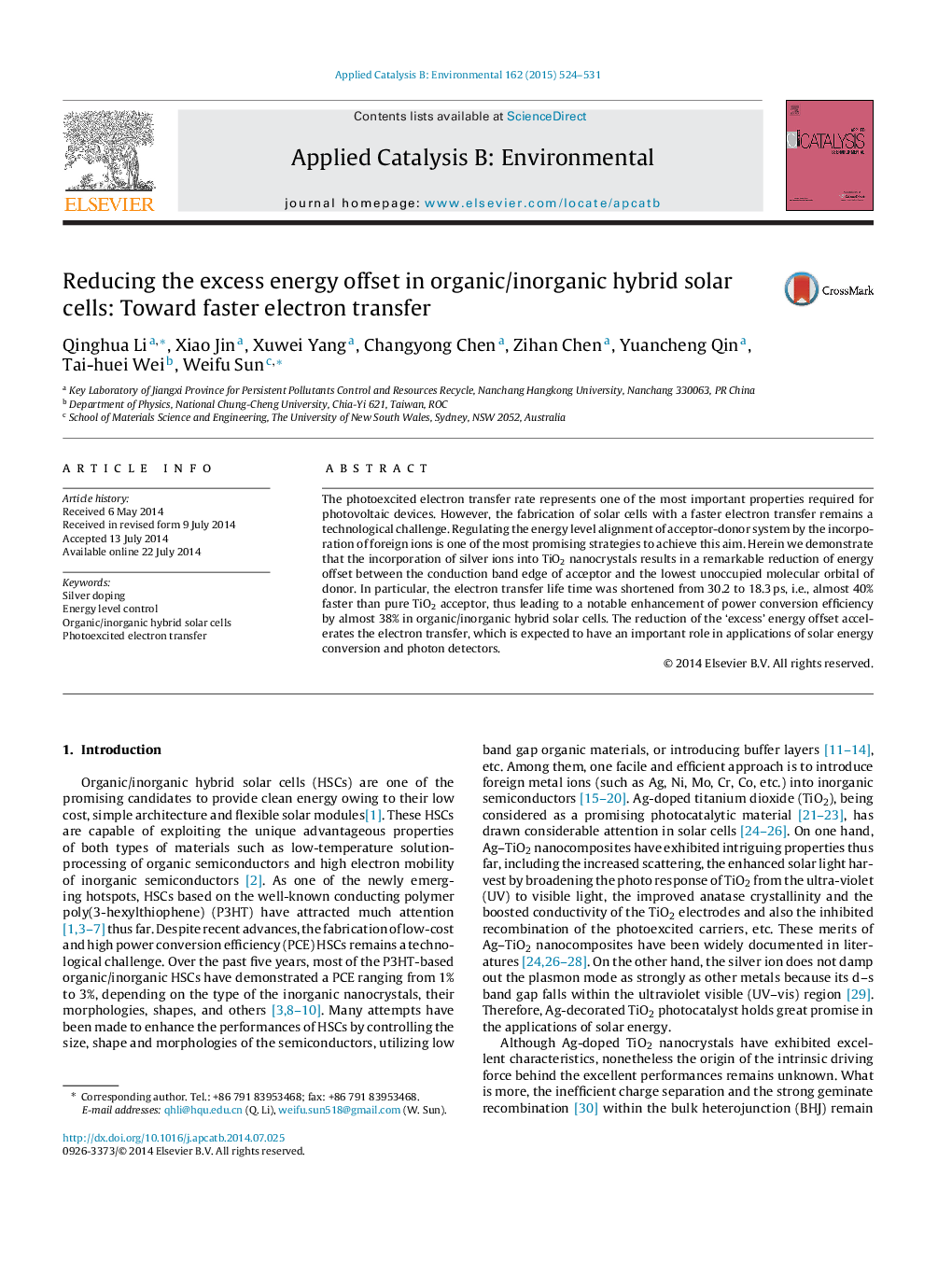| کد مقاله | کد نشریه | سال انتشار | مقاله انگلیسی | نسخه تمام متن |
|---|---|---|---|---|
| 45675 | 46418 | 2015 | 8 صفحه PDF | دانلود رایگان |
• Ag-doped TiO2 nanoparticles were prepared by hydrothermal method and the Ag species is mainly in oxidized state of Ag(I).
• Notably, the CB-LUMO energy offset has decreased from 1.33 to 1.07 eV.
• The hot electron transfer lifetime has been shortened from 30.2 to 18.3 ps.
• Ag-doped TiO2/P3HT solar cell exhibits a much lower charge transfer resistance than that made from pure TiO2.
• Ag-doped TiO2/P3HT solar cell exhibits a notable PCE of 2.73%, which is much higher than that made from pure TiO2
The photoexcited electron transfer rate represents one of the most important properties required for photovoltaic devices. However, the fabrication of solar cells with a faster electron transfer remains a technological challenge. Regulating the energy level alignment of acceptor-donor system by the incorporation of foreign ions is one of the most promising strategies to achieve this aim. Herein we demonstrate that the incorporation of silver ions into TiO2 nanocrystals results in a remarkable reduction of energy offset between the conduction band edge of acceptor and the lowest unoccupied molecular orbital of donor. In particular, the electron transfer life time was shortened from 30.2 to 18.3 ps, i.e., almost 40% faster than pure TiO2 acceptor, thus leading to a notable enhancement of power conversion efficiency by almost 38% in organic/inorganic hybrid solar cells. The reduction of the ‘excess’ energy offset accelerates the electron transfer, which is expected to have an important role in applications of solar energy conversion and photon detectors.
The potential powerful role of catalytic silver ions playing in solar energy conversion was explored and the innate catalytic dynamics were unveiled. The excess energy offset between conduction band of acceptor and lowest unoccupied molecular orbit of donor has decrease from 1.33 to 1.07 eV. Consequently the hot electron transfer time from donor to acceptor shortens by almost 40% (i.e., from τh–e = 30.2 to 18.3 ps). After silver ions into TiO2 films, organic/inorganic bulk-heterojunction solar cell delivers an improved power conversion efficiency of 2.73% as compared to 1.98% of pure TiO2.Figure optionsDownload as PowerPoint slide
Journal: Applied Catalysis B: Environmental - Volume 162, January 2015, Pages 524–531
